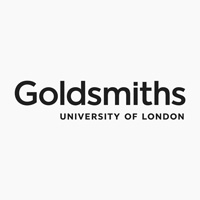fees waived
History of Art, BA (Hons)
Goldsmiths, University of London, United Kingdom
Ranking in UK
Fine Art
Art and Design
Art and Design
Costs
food & rent S$24.9K / year
Entry requirements
Scholarships
Limited quantity
Information
Code
Intakes
Website (External)
Programmes
Information
Duration
2028
Studying BA History of Art at Goldsmiths offers a dynamic exploration of modern and contemporary art, theory, and global visual culture from innovative perspectives. The programme fosters independent critical engagement with artworks and their historical, cultural, and political contexts, extending beyond traditional museum pieces to include everyday elements like architecture, media, and urban environments. Based in London, students benefit from world-class resources, including galleries and museums, while gaining practical experience through placements at institutions such as Hackney Museum. Graduates often pursue careers in curation, exhibitions, journalism, and marketing.The curriculum spans three years, with Year 1 introducing foundational concepts through modules like Modernities and Seeing and Showing. Year 2 includes compulsory courses such as Contemporaneities and elective options aligned with themes like art and ideas or embodiment. In Year 3, students undertake Expanded Practices and select from advanced modules, including opportunities for public practice projects. Assessment is coursework-based, featuring essays, creative projects, presentations, and multimedia work.
Year 1 (credit level 4) In your first year you'll examine changing conceptions of art and the artist, historically and also in terms of context, ideas, and kinds of practice. You will also be introduced to history of art as a discipline and will engage in discussion of key aspects of contemporary visual culture. Each of our first-year modules is taught by a team of four or five different teachers from the permanent faculty. Our approach to learning, teaching and research is exploratory, innovative and rigorous. In this way, first-year students soon get to know many of the department’s core academic staff. You'll take the following compulsory modules: Modernities Seeing and Showing Space and Time Beyond Boundaries Please note that due to staff research commitments not all of the modules may be available every year. Year 2 (credit level 5) You will take the following compulsory modules: Contemporaneities The Goldsmiths Elective Situated Knowledges in Visual Cultures Option modules You also choose option modules to the value of 45 credits from an approved list available annually from the Department of Visual Cultures. Second and third-year modules are thematic in content, and the themes relate to five pathways running through the programme: Art and ideas Space and place The Curatorial Sound and image Embodiment Individual modules are identified with one or more of these pathways, to help you in defining your special areas of interest as you proceed. Recent examples of option modules include: Beckett & Aesthetics: Bodies and Identity Cohabitations Inhabitations The Fact of Blackness I Fashion as Dream Image Museums, Galleries, Exhibitions Popular Modernism Patterns of Perception Radical Imaginations and Speculative Voyages I The Goldsmiths Project Year 3 (credit level 6) In your third year, you will take the following compulsory module: Expanded Practices in Visual Cultures Option modules You will also take 2 to 4 option modules, chosen from an approved list that is available annually from the Department of Visual Cultures. One of the optional modules you may choose is the 'Visual Cultures as Public Practice' module. During this module, you will have the opportunity to link your studies to one of many interesting public institutions. Your research project could be based at the V&A, The Live Art Development Agency, Iniva, Hackney Museum, the Zoo, amongst many others. Recent examples of option modules include: Animating Architecture Archive and Spectacle Film Fables Documentary Lives Philosophy and... Sexual Poetics The Truth in Painting Counter Forensics Research Architecture Visual Cultures as Public Practice Please note that due to staff research commitments not all of the modules may be available every year.
A local representative of Goldsmiths, University of London in Singapore is available online to assist you with enquiries about this course.

